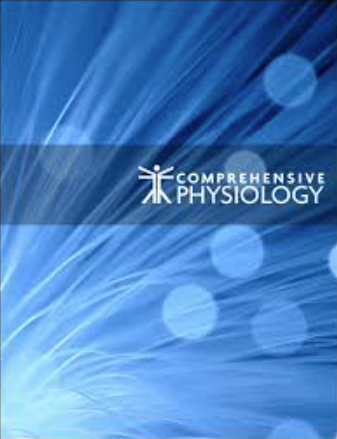求助PDF
{"title":"行为运动表现。","authors":"Raz Leib, Ian S Howard, Matthew Millard, David W Franklin","doi":"10.1002/cphy.c220032","DOIUrl":null,"url":null,"abstract":"<p><p>The human sensorimotor control system has exceptional abilities to perform skillful actions. We easily switch between strenuous tasks that involve brute force, such as lifting a heavy sewing machine, and delicate movements such as threading a needle in the same machine. Using a structure with different control architectures, the motor system is capable of updating its ability to perform through our daily interaction with the fluctuating environment. However, there are issues that make this a difficult computational problem for the brain to solve. The brain needs to control a nonlinear, nonstationary neuromuscular system, with redundant and occasionally undesired degrees of freedom, in an uncertain environment using a body in which information transmission is subject to delays and noise. To gain insight into the mechanisms of motor control, here we survey movement laws and invariances that shape our everyday motion. We then examine the major solutions to each of these problems in the three parts of the sensorimotor control system, sensing, planning, and acting. We focus on how the sensory system, the control architectures, and the structure and operation of the muscles serve as complementary mechanisms to overcome deviations and disturbances to motor behavior and give rise to skillful motor performance. We conclude with possible future research directions based on suggested links between the operation of the sensorimotor system across the movement stages. © 2024 American Physiological Society. Compr Physiol 14:5179-5224, 2024.</p>","PeriodicalId":10573,"journal":{"name":"Comprehensive Physiology","volume":"14 1","pages":"5179-5224"},"PeriodicalIF":5.2000,"publicationDate":"2023-12-29","publicationTypes":"Journal Article","fieldsOfStudy":null,"isOpenAccess":false,"openAccessPdf":"","citationCount":"0","resultStr":"{\"title\":\"Behavioral Motor Performance.\",\"authors\":\"Raz Leib, Ian S Howard, Matthew Millard, David W Franklin\",\"doi\":\"10.1002/cphy.c220032\",\"DOIUrl\":null,\"url\":null,\"abstract\":\"<p><p>The human sensorimotor control system has exceptional abilities to perform skillful actions. We easily switch between strenuous tasks that involve brute force, such as lifting a heavy sewing machine, and delicate movements such as threading a needle in the same machine. Using a structure with different control architectures, the motor system is capable of updating its ability to perform through our daily interaction with the fluctuating environment. However, there are issues that make this a difficult computational problem for the brain to solve. The brain needs to control a nonlinear, nonstationary neuromuscular system, with redundant and occasionally undesired degrees of freedom, in an uncertain environment using a body in which information transmission is subject to delays and noise. To gain insight into the mechanisms of motor control, here we survey movement laws and invariances that shape our everyday motion. We then examine the major solutions to each of these problems in the three parts of the sensorimotor control system, sensing, planning, and acting. We focus on how the sensory system, the control architectures, and the structure and operation of the muscles serve as complementary mechanisms to overcome deviations and disturbances to motor behavior and give rise to skillful motor performance. We conclude with possible future research directions based on suggested links between the operation of the sensorimotor system across the movement stages. © 2024 American Physiological Society. Compr Physiol 14:5179-5224, 2024.</p>\",\"PeriodicalId\":10573,\"journal\":{\"name\":\"Comprehensive Physiology\",\"volume\":\"14 1\",\"pages\":\"5179-5224\"},\"PeriodicalIF\":5.2000,\"publicationDate\":\"2023-12-29\",\"publicationTypes\":\"Journal Article\",\"fieldsOfStudy\":null,\"isOpenAccess\":false,\"openAccessPdf\":\"\",\"citationCount\":\"0\",\"resultStr\":null,\"platform\":\"Semanticscholar\",\"paperid\":null,\"PeriodicalName\":\"Comprehensive Physiology\",\"FirstCategoryId\":\"3\",\"ListUrlMain\":\"https://doi.org/10.1002/cphy.c220032\",\"RegionNum\":2,\"RegionCategory\":\"医学\",\"ArticlePicture\":[],\"TitleCN\":null,\"AbstractTextCN\":null,\"PMCID\":null,\"EPubDate\":\"\",\"PubModel\":\"\",\"JCR\":\"Q1\",\"JCRName\":\"PHYSIOLOGY\",\"Score\":null,\"Total\":0}","platform":"Semanticscholar","paperid":null,"PeriodicalName":"Comprehensive Physiology","FirstCategoryId":"3","ListUrlMain":"https://doi.org/10.1002/cphy.c220032","RegionNum":2,"RegionCategory":"医学","ArticlePicture":[],"TitleCN":null,"AbstractTextCN":null,"PMCID":null,"EPubDate":"","PubModel":"","JCR":"Q1","JCRName":"PHYSIOLOGY","Score":null,"Total":0}
引用次数: 0
引用
批量引用

 求助内容:
求助内容: 应助结果提醒方式:
应助结果提醒方式:


